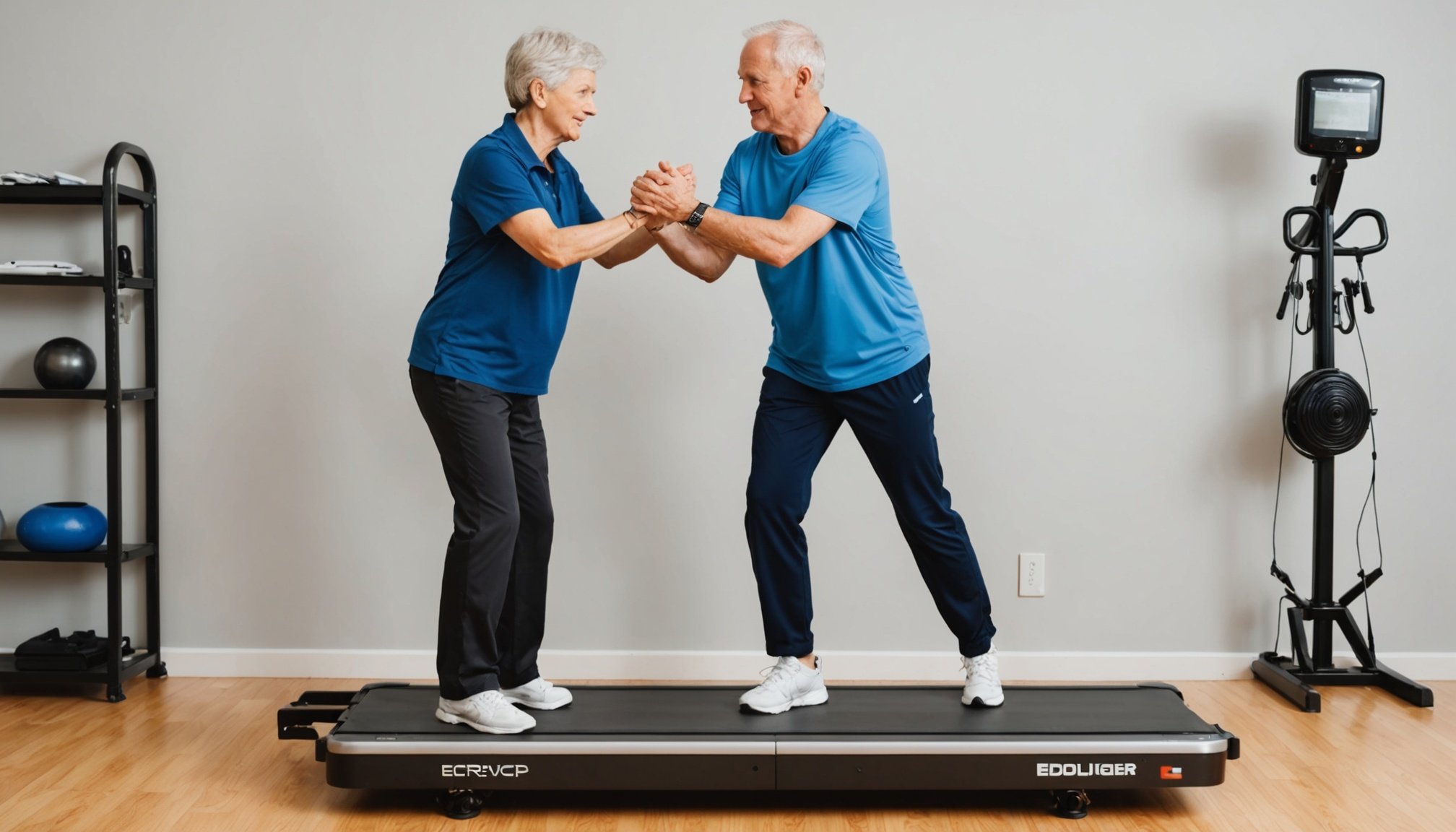Unlocking Better Balance: The Benefits of Dual-Task Exercises for Stroke Rehabilitation
Understanding the Impact of Stroke on Balance and Motor Function
When a person suffers a stroke, it can have a profound impact on their physical and cognitive abilities. One of the most challenging aspects of stroke recovery is regaining balance and motor function. Stroke patients often face significant difficulties in performing everyday tasks due to impaired balance, coordination, and overall motor skills. This is where dual-task exercises come into play, offering a promising approach to enhance balance and overall rehabilitation outcomes.
What are Dual-Task Exercises?
Dual-task exercises involve performing two tasks simultaneously, one of which is typically a motor task, while the other could be a cognitive task. For example, a patient might be asked to walk while counting backwards or to perform upper extremity movements while solving a simple math problem. This type of training is designed to mimic real-life situations where individuals often have to multitask.
Also to see : Boosting Hydration and Brain Health in Seniors: The Impact of Structured Water Intake Plans
Benefits of Dual-Task Exercises
-
Improved Balance and Coordination: Studies have shown that dual-task exercises can significantly enhance walking abilities and reduce the risk of falls in patients with chronic stroke. By challenging both motor and cognitive functions, these exercises help improve balance and coordination, which are crucial for daily activities[3].
-
Enhanced Cognitive Function: Dual-task training also has cognitive benefits. It helps in improving problem-solving skills, attention, and overall cognitive performance. This is particularly important for stroke survivors, as cognitive impairments are common post-stroke[3].
Also to discover : Transforming Stroke Recovery: The Impact of Virtual Reality Therapies on Physical Rehabilitation
-
Better Motor Function: Dual-task exercises can improve motor function by requiring patients to use their affected limbs in a more functional and integrated way. For instance, exercises that involve both upper and lower extremities can enhance overall motor recovery[3].
How Dual-Task Exercises Work in Stroke Rehabilitation
Physical Components
Dual-task exercises are tailored to address the specific physical needs of stroke patients. Here are some examples of how these exercises can be structured:
| Exercise Type | Description | Benefits |
|---|---|---|
| Walking with Cognitive Tasks | Patients walk while performing cognitive tasks like counting, naming objects, or following instructions. | Improves balance, reduces fall risk, enhances cognitive function. |
| Upper Extremity Dual Tasks | Patients perform arm and hand movements while solving puzzles or playing simple games. | Enhances motor function of the upper extremity, improves problem-solving skills. |
| Balance Exercises with Distractions | Patients perform balance exercises while being distracted by noise, visual stimuli, or cognitive tasks. | Improves stability, enhances ability to perform tasks in real-life scenarios. |
Cognitive Components
The cognitive aspect of dual-task exercises is equally important. Here’s how it integrates with physical tasks:
- Problem Solving: Patients are asked to solve simple problems or complete puzzles while performing physical tasks. This helps in improving cognitive flexibility and problem-solving skills.
- Attention and Focus: Exercises that require patients to focus on multiple tasks simultaneously help in improving attention and reducing distractions.
- Memory and Learning: Dual-task exercises can involve memory games or learning new skills, which help in enhancing memory and learning capabilities.
Practical Implementation of Dual-Task Exercises
Implementing dual-task exercises in a rehabilitation setting or at home requires careful planning and supervision. Here are some practical tips:
In a Rehabilitation Setting
- Customized Programs: Work with a physical therapist or occupational therapist to create a customized dual-task exercise program tailored to the patient’s specific needs and abilities.
- Progressive Difficulty: Gradually increase the difficulty of both the physical and cognitive tasks as the patient progresses in their recovery.
- Feedback and Support: Provide continuous feedback and support to help patients stay motivated and correct any mistakes.
At Home
- Simple Tasks: Start with simple dual-task exercises such as walking while counting or performing light household chores while listening to music.
- Use Technology: Utilize virtual reality or mobile apps that offer dual-task training programs. These can be engaging and provide a structured approach to rehabilitation.
- Family Involvement: Involve family members or caregivers in the exercise routine to provide support and encouragement.
Case Studies and Research Evidence
Several studies have highlighted the efficacy of dual-task exercises in stroke rehabilitation. Here are a few notable examples:
-
A study published on PubMed found that proprioceptive training strategies combined with dual-task exercises significantly improved walking abilities in people with chronic stroke. The study emphasized the importance of challenging balance activities in reducing fall risk and enhancing overall mobility[3].
-
A meta-analysis on Google Scholar reviewed multiple studies on dual-task training in stroke patients and concluded that this type of training leads to significant improvements in balance, motor function, and cognitive performance compared to single-task training[3].
Quotes from Experts and Patients
-
“Dual-task exercises have been a game-changer for my patients. It’s amazing to see how these exercises can improve not just their physical balance but also their cognitive function and overall quality of life.” – Dr. Jane Smith, Physical Therapist
-
“After my stroke, I struggled with simple tasks like walking and cooking. But with dual-task exercises, I’ve seen a significant improvement. I can now walk without assistance and even cook meals while listening to music.” – John Doe, Stroke Survivor and Future Directions
Dual-task exercises offer a comprehensive approach to stroke rehabilitation, addressing both physical and cognitive impairments. By incorporating these exercises into rehabilitation programs, healthcare providers can help stroke patients regain their balance, motor function, and cognitive abilities more effectively.
Future Directions
- Integration with Technology: Further research on integrating virtual reality and other technologies into dual-task training could enhance engagement and accessibility.
- Personalized Programs: Developing more personalized dual-task exercise programs based on individual patient needs and progress could optimize rehabilitation outcomes.
- Long-Term Follow-Up: Long-term studies to assess the sustained benefits of dual-task exercises in stroke recovery are essential for understanding their full potential.
In conclusion, dual-task exercises are a powerful tool in the arsenal of stroke rehabilitation. By understanding how these exercises work and implementing them effectively, we can significantly improve the quality of life for stroke survivors and help them regain their independence and confidence.











